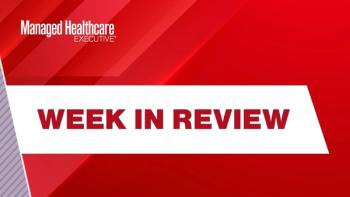
10 Predictions for ’23
Amendola Communications collected 10 predictions for developments in healthcare in 2023 from leaders in the field.
Competition from consumer-oriented brands
2023 will see an acceleration of some significant trends that pressure the traditional care model for providers. We have seen big retail, tech, and payer organizations move further into primary care and invest in delivery systems that look more like a great retail or hospitality experience than what patients have traditionally gotten. Competition from these consumer-centered brands and consolidation among providers driven by financial pressures will mean that providers will need to compete for patient acquisition and retention in new ways. Patient expectations have shifted, innovative health systems are already adapting, and you can't take patient loyalty for granted if you are delivering a patient journey defined by your organization's needs instead of the consumer's.
Patty Hayward, vice president for health and life science,
Consumer-centric experiences as a competitive advantage
As retail companies seamlessly provide flexible, efficient, and timely services to their customers, the bar on consumer experience is rising across the board. Personalized services have become table stakes, and health plans that can deliver consumer-centric experiences to their members will have a competitive advantage over plans without the same approach. Health plans should design strategies and implement technology solutions that provide data-driven insights to better understand, anticipate, and address their members’ needs in real time. By implementing technologies with advanced analytics and workflow solutions for member interactions, health plans can reduce costs, increase engagement, and improve satisfaction.
Enam Noor, CEO and founder,
Payers to use intelligent prior authorization
As interoperability ramps up and payers become more accustomed to the secure exchange of healthcare data via APIs and other means, the industry will need to more fully embrace digital technologies to reduce the burden of various administrative processes, including prior authorization. The continued push for consumer-centric healthcare is driving renewed interest in stronger collaborations with providers to proactively manage patient care. Instead of viewing member health from a population health and strictly utilization management perspective, payers will use intelligent prior authorization platforms to partner with providers in the creation, approval, and execution of evidence-based care plans designed to improve outcomes and contain costs.
Siva Namasivayam, co-founder and CEO,
Breakout for value-based care
2023 will be a breakout year for value-based care where we expect to see significant transformation in payment and care delivery. Across the past two years of the pandemic, we better understand that ground-up redesign is an imperative and not an option. The fee-for-service model is creating provider burnout at alarming rates, and the pandemic shed a major light on social and cultural health inequities. Once more, CMS has put a stake in the ground that nearly all Medicare and Medicaid members need to be aligned to value-based payment models by 2030. It appears that the industry is poised in 2023 with healthcare stakeholders aligned and incentivized to drive the durable, systems-level change that’s needed to make this vital shift in the U.S. healthcare system.
Brandon Clark, chief strategy officer,
Automation of manual tasks
On the cusp of a new year, the healthcare sector will confront three main challenges, including workforce demands, post-COVID economic pressure on all hospitals to reduce costs and to focus technology investments only on solutions delivering ROI, and revenue generation in a tight economic environment. From my perspective, we can no longer add more responsibilities to the plates of doctors, nurses, and care teams already besieged with many manual tasks. As care delivery expands beyond the four walls of a hospital, providers will give serious consideration to automating many of these manual tasks as a means of optimizing a shrinking workforce and maximizing already thin operating margins.
Greg Miller, chief growth officer,
Connective care technologies for risk scoring, actionable analytics
The homes of seniors continue to be the “black box” of healthcare. To best support seniors aging in place, health plans, physicians and providers need more visibility and insights into the changing needs of patients when they are in between visits. Connective care technologies like personal emergency response services (PERS), remote patient monitoring (RPM) with AI, and medication management can provide advanced risk scoring and actionable analytics to help health plans, physicians and providers intervene before a fall or medical emergency happens. Additionally, when patients are engaged in their plan of care and providers can predict an adverse event and adjust treatment, we deliver better outcomes and save the healthcare system money.
Richard Brooks, president of healthcare,
Pressure to keep data secure
As more payers and providers engage in value-based contracts, they must collect and share massive volumes of patient data, much of which comes from wearables and at-home devices. But there are concerns among consumers about patient privacy and among providers regarding data quality, according to a Deloitte survey on wearable health and activity data. Over the next year, I hope to see continued progress in enabling patient data sharing through greater interoperability. I also expect more pressure on consumer device makers to better secure the data they collect and transmit over networks as health organizations demand higher-quality data.
Gregg Church, president,
Smart automation to boost efficiency
Despite the fact that 2022 has been referred to as an "unprecedented year" for healthcare, many of the constraints on HCO's budgets and margins will persist through 2023 and beyond. More organizations are turning to smart automation to boost efficiency in delivering high-quality, coordinated care at an affordable price in response to operational and budgetary issues. This presents a chance for HCOs to deliver on the promise of automation to lessen the administrative burdens for care-continuum contributors, as well as a chance for health systems and health plans to collaborate.
Michael Meucci, CEO,
Technology for managing increasing volumes of data
In 2023, expect increased demand for technologies that can help clinicians effectively manage the growing volumes of incoming data. With the enforcement of TEFCA (Trusted Exchange Framework and Agreement) and the 21st Century Cures Act, clinicians have more clinical data than ever before – and need better tools to help them filter and find the specific information they need to efficiently and effectively deliver care. As interoperability improves and more data is shared, we must empower clinicians with clinically efficient EHRs and solutions that deliver usable, actionable, and diagnostically connected data at the point of care.
David Lareau, CEO,
AI for identifying, extracting SDOH information
Payers and providers are increasingly focused on health equity, social determinants of health (SDOH) and seeking to understand and act on health disparities; however, getting to the right data is often a challenge. To glean insights into the health of patients and populations, we are seeing an increased need for AI technologies such as natural language processing and machine learning to identify and extract SDOH features and other critical data from free-text fields within EMRs. These same technologies are also helping payers with risk adjustment by enabling the analysis of unlimited amounts of text-based data without fatigue in a consistent, unbiased manner.
Calum Yacoubian, director NLP health care strategy,
Newsletter
Get the latest industry news, event updates, and more from Managed healthcare Executive.

















































